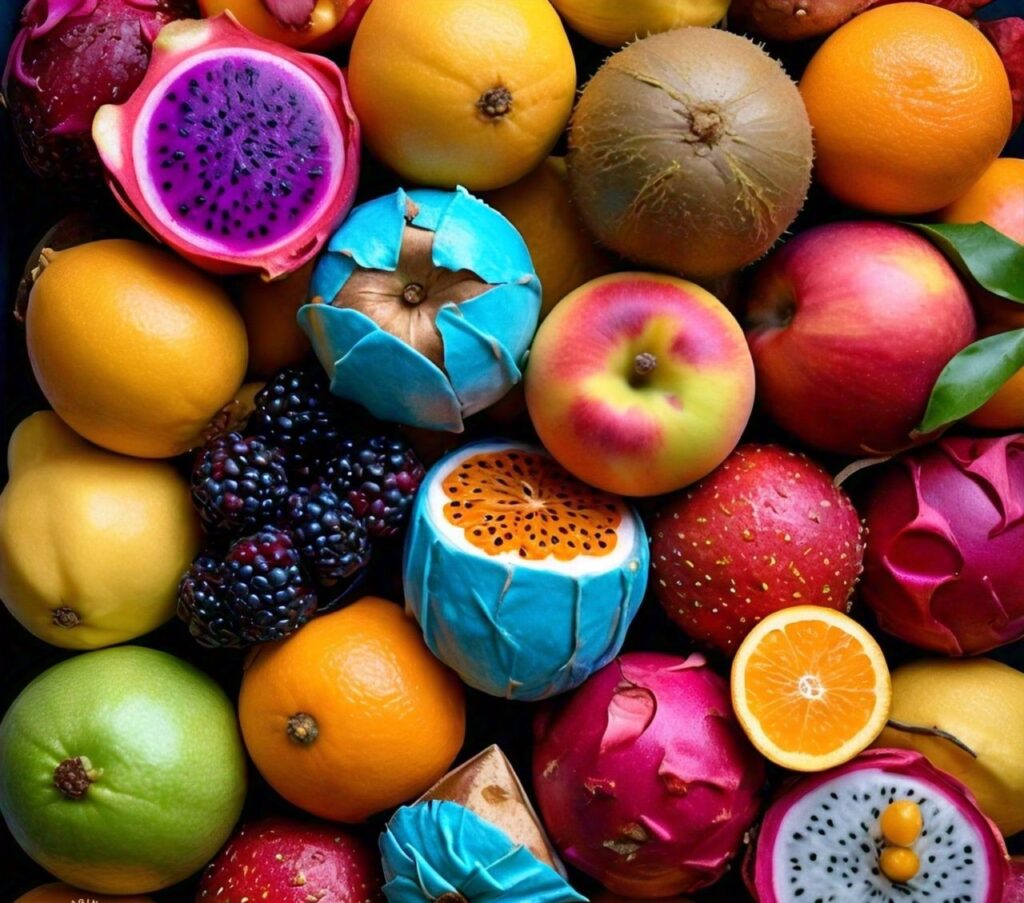Are you trying to reach new heights in terms of health and nutrition? Look no further than the straightforward but effective gesture of appreciating nature’s abundance: fruit peels. We explore the health benefits of fruit peels in this extensive guide, along with the reasons you should adopt the motto “Eat Your Peels.” Learn how adding fruit peels to your diet can transform your approach to well-being, from opening up a wealth of nutrients to boosting your body’s defenses. Come along with us as we investigate the nutritional powerhouses concealed in these frequently disregarded jewels and set out on a path toward optimum health and energy.
The Nutrient-Rich Composition of Fruit Peels
Fruit peels are an amazing source of vitamins, minerals, and antioxidants that can match or even exceed the nutrients in meat. Packed with fiber, potassium, vitamin C, and a host of phytonutrients, these sometimes disregarded peels have a lot going for them in terms of boosting energy and health.
Fiber: Nature’s Digestive Aid
Fruit peels’ high fiber content is one of their best qualities. Fiber helps to keep the gut flora healthy, encourage regularity, and prevent constipation—all of which are critical for sustaining digestive health. Fruit peels are an easy way to increase your dietary fiber intake, which promotes healthy digestion and general well-being.
Antioxidants: Guardians of Health
Compounds known as antioxidants aid in defending the body against oxidative stress and inflammation, which are connected to several chronic illnesses, such as cancer and heart disease. Strong antioxidants like flavonoids, carotenoids, and phenolic acids found in fruit peels protect cellular health by scavenging dangerous free radicals. By adding fruit peels to your diet, you can strengthen your body’s defenses against chronic illnesses.
Vitamin C: Immune Support Extraordinaire
Vitamin C, well known for enhancing immunity, is essential for fortifying the body’s defenses against infections and diseases. Although fruit flesh is frequently promoted as the main source of vitamin C, the peel also has significant concentrations of this essential component. You may easily prevent seasonal sniffles and strengthen your immune system by including fruit peels in your diet.
Potassium: Vital for Heart Health
An important mineral for supporting cardiovascular health and sustaining normal blood pressure levels is potassium. Fruit peels are a natural way to improve heart health and lower the risk of hypertension and stroke. Peels from citrus fruits, such as oranges and lemons, are especially high in potassium. They can help you live a longer life and improve your cardiovascular health in general.
Debunking Common Myths About Fruit Peels
They are incredibly nutritious, but people tend to avoid them because of false beliefs about their flavor and safety. But now is the moment to correct the record and dispel these lies once and for all:
Myth #1: Fruit peels are unsafe to eat.
Despite what many people think, they are completely safe to eat as long as they are well-washed to get rid of any pollutants or pesticide residue. Choosing organic food can help allay worries about pesticide exposure and provide you peace of mind when it comes to reaping the nutritional advantages of fruit peels.
Myth #2: Fruit peels are bitter and unpalatable.
Many of them have a good flavor profile that can improve the taste and texture of foods, even if some may have a little bitter taste. You may enhance your meals and enjoy the nutritional benefits by adding them to salads, smoothies, and dishes that are loaded with zest.
Harnessing the Power of Fruit Peels in Your Diet
It is time to include them in your regular diet now that you are aware of their nutritional advantages. Here are a few easy yet powerful strategies to increase your nutritional intake and maximize the benefits of fruit peels:
Zest it Up: Grate citrus peels into marinades, baked dishes, and salads to add a zesty flavor.
Mix and Savor: To add even more fiber, vitamins, and antioxidants to smoothies, add fruit peels.
Infuse Flavor: Add slices of fruit peel to your water pitcher to create infused water, which is a revitalizing and hydrating drink.
Snack Wisely: Fruit peels can be dried to create crunchy, nutrient-dense snacks that fulfill appetites without sacrificing health.

Downsides to Eating Fruit Peels
There are potential downsides to eating fruit peels, including:
Pesticide residues: Compared to the inside of the fruit, fruit peels, such as the peel of an orange, may have higher concentrations of pesticides. Long-term pesticide use has been connected to detrimental health outcomes, such as hormone imbalance and an elevated risk of cancer. Using hot water to properly wash fruits can help minimize pesticide intake.
Digestive Problems: Due to their rough textures and high fiber content, some fruit peels, like orange peels, are difficult to digest. For instance, eating a lot of orange peels might cause bloating or cramping in the stomach. To avoid stomach problems, it is advised to take fewer doses at a time.
Unpleasant Texture and Taste: Fruit peels, such as orange peels, have a rough, dry texture that can be difficult to chew and a bitter taste. Not everyone will find this bitter flavor and rough texture to be pleasant. Fruit peels have many nutritional advantages, but some people may not want to eat them because of their flavor and texture.
Fruits with the Most Nutrient-Rich Peels
The fruits with the most nutrient-rich peels are
Citrus fruits (lemons, limes, oranges, and grapefruits):
- The peels of these fruits are higher in carotenoids and vitamin C than the pulp.
- Particularly, orange peel has 136 mg of vitamin C per 100g, while fruit flesh only has 71 mg.
- Other vitamins, minerals, and antioxidants can also be found in abundance in citrus peels.
Apples:
- Compared to meat, apple peels have 300% more vitamin K, 140% more vitamin A, and 110% more vitamin C.
- In addition, apple peels contain high levels of quercetin, an antioxidant, and both soluble and insoluble fiber.
Carrots:
- Cinnamon peel contains 54% of the vegetable’s antioxidant-producing phenolic acids.
- In comparison to the inner flesh, carrot peels have larger quantities of carotenoids, vitamin K, niacin, and vitamin C.
Mango:
Dietary fiber, protein, fat, and phytochemicals such as ascorbic acid, carotenoids, polyphenols, and tocopherols are all abundant in mango peel.

For more, read: Is Ham Pork?
FAQs (Frequently Asked Questions)
Do fruit peels taste bitter?
While some fruit peels may have a slightly bitter taste, many varieties boast a pleasant flavor profile that can enhance the taste and texture of dishes. Experiment with different fruits and recipes to find combinations that suit your palate.
Can I eat fruit peels raw?
Yes, you can eat many fruit peels raw. However, some may be more palatable when cooked or processed. It’s essential to wash fruit peels thoroughly before consuming them to ensure they are clean and free of any contaminants.
Can I eat fruit peels if I have allergies?
Individuals with fruit allergies should exercise caution when consuming fruit peels, as they may contain allergens. It’s advisable to consult with a healthcare professional before incorporating fruit peels into your diet if you have known allergies.
Are there any nutritional differences between fruit peels and the flesh of the fruit?
While the flesh of fruits often receives more attention, fruit peels can contain higher concentrations of certain nutrients, such as fiber, antioxidants, and vitamins. Including both the peel and flesh in your diet can provide a more comprehensive array of nutrients.
Are there any fruits whose peels are not suitable for consumption?
Some fruits, such as bananas and pineapples, have thick, fibrous peels that are not typically consumed due to their tough texture. Additionally, fruits with inedible or toxic peels, such as avocado and mango, should be peeled before consumption.
Conclusion
In conclusion, fruit peels are nutritional powerhouses that deserve a place of honor in your diet. By unlocking the nutritional potential of these often-overlooked gems, you can support your health, enhance your culinary creations, and embark on a journey toward vitality and wellness. Embrace the beauty of fruit peels and reap the rewards of nature’s bounty.

